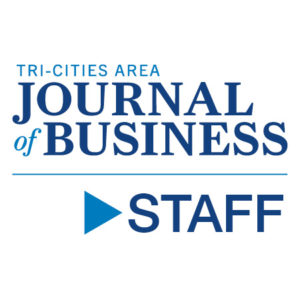
Home » Legislature likely to consider tuition-free community college tuition in Washington
Legislature likely to consider tuition-free community college tuition in Washington
November 30, 2015
By John Stang for TCAJOB
[blockquote quote="Without the funding … it’s kinda like kissing your sister" source="Gene Colin, board chairman of the South Seattle College Foundation" align="right" max_width="300px"]Two Seattle Democrats — Sens. Pramilia Jayapal and David Frockt — are working on a proposal to offer tuition-free community college in Washington. The Washington proposal, inspired by similar programs underway in Oregon and Tennessee, is still in the brainstorming stage. Frockt and Jayapal expect to introduce a bill creating such a program when the 2016 legislative session begins in January.
“The high school diploma is not considered preparation for today’s economy,” said Rich Cummins, president of Columbia Basin College in Pasco. “People need help to get more education beyond high school.” CBC has 11,334 full-time and part-time students, which translates to the equivalent of roughly 6,000 full-time students. Numerous questions still need to be answered about the concept, however.
How many community colleges students will be involved? Will this program be offered just to students just grating form high school, or will it be expanded to include middle-age people returning to school after years away from the classroom? How much money will be needed? Where will that money come from? Will the program cover just tuition, or include books, dorms and other college expenses? Should there in a differentiation between community college students and freshmen and sophomores at Washington’s four-year universities?
“We’re in the early stages of drafting legislation,” Jayapal said. Gene Colin, board chairman of the South Seattle College Foundation, the will is there, along with excitement and passion. But enthusiasm can only take the project so far, he added. “Without the funding … it’s kinda like kissing your sister,” said Colin.
Jayapal and Frockt have not yet discussed the concept in depth with Republican counterparts. The Republicans control the state senate, so their support will be needed. “We want to make sure we can get bipartisan support,” Jayapal said. It is difficult to predict how Washington’s Legislature will react to this concept.
In the 2015 session, Republicans pushed hard for a 25 percent tuition cut for state universities, community colleges and technical schools. The Democrats opposed the cutting tuition, because the cuts would cost more than $300 million with no revenue sources identified.
Ultimately, the two sides compromised at a 5 percent cut across the board in 2015-2016.
In two years, the University of Washington and Washington State University’s cuts would grow to a cumulative 15 percent. At the same time, the cumulative tuition cuts at Evergreen State College, Western Washington University, Central Washington University and Eastern Washington University would grow to a cumulative 20 percent. The community colleges would not see further cuts under the 2015 legislation.
The bottom line is politics and budget crunches could affect this proposal’s chances of passage, especially since the Democrats and Republicans are expected to debate some major property tax changes in the 2016 session in order to comply with the 2012 Washington Supreme Court ruling to improve teacher-student ratios in Grades K-3. That effort is expected to involve a few billion dollars.
Another potential pitfall is that 2016 is an election year, and the 2016 session is supposed to last only 60 days. Legislators are reluctant to tackle anything tax-oriented in an election year. On the other hand, both Republicans and Democrats embraced this concept in Oregon. In 2013, the Oregon House of Representatives approved studying the concept 57-2 and the Oregon Senate passed it 29-0. The study led to Oregon trying this concept for the first time in the fall of 2016.
The Oregon legislature appropriated $10 million to the tuition-free program, a small part of that state’s community college system’s annual budget of $275 million. The state decided to limit the program to paying solely tuition for only students who just graduated from high school because that is how much as the state could invest at this time, said Ben Cannon, executive director of the Oregon Higher Education Coordinating Commission. To be eligible, those students must graduate high school with at least a 2.5 grade-point average.
Oregon also requires those students to fill out applications for federal Pell grants. Oregon’s program is based on students applying for financial aid and the state paying will pay for the remaining tuition. Cannon speculated that 5,000 to 10,000 students could participate in the programs. Oregon’s community colleges enroll roughly 325,000 full-time and part-time students, which would correspond to roughly 100,000 full-time students.
Oregon’s average annual county college tuition is $3,500 to $3,700 depending on the school. By comparison, Washington’s community college system served 385,872 people in the 2014-2015 school year, or the equivalent of 181,451 full-time students. After the 5 percent tuition cut, Washington’s community college tuitions is $3,846 a year. Overall for the 2015-2016 fiscal year, Washington’s community college system is estimated to receive $686 million from the state and $333 million from tuition.
Oregon’s program came one year behind Tennessee’s, which also targets people who had just graduated high school. That program received more than 35,000 applications in its first year, according to Nashville’s Tennesseean newspaper. On the other hand, Mississippi’s legislature recently rejected the concept.
At the beginning of this year, President Barack Obama proposed a national program of free tuition for the first two years of college for student who graduated high school with a GPA of at least 2.5 and a family income of less than $200,000. The bills were introduced in Congress this summer and are still early in the committee stages.
Local News
KEYWORDS november 2015





